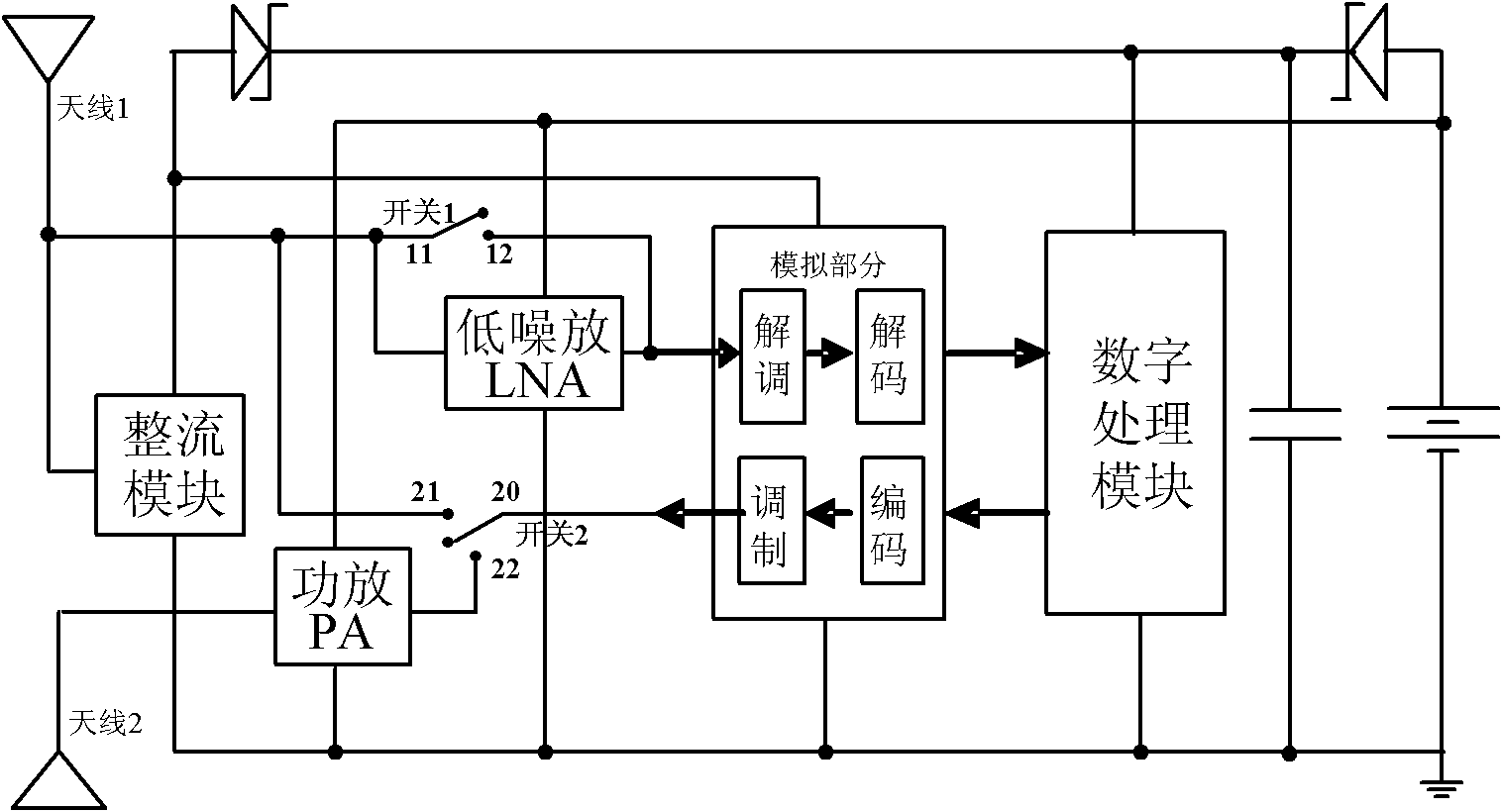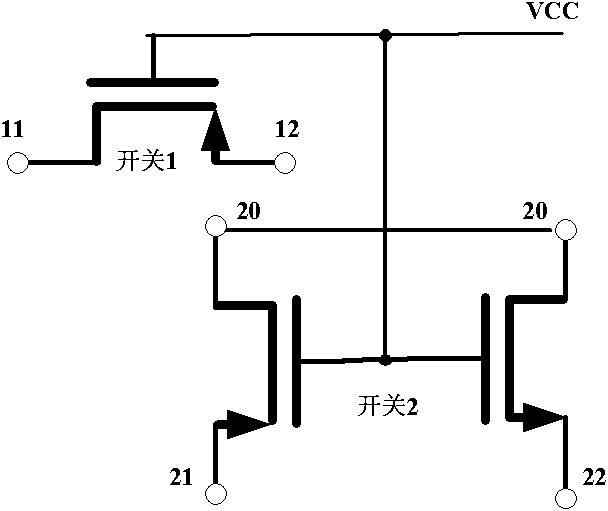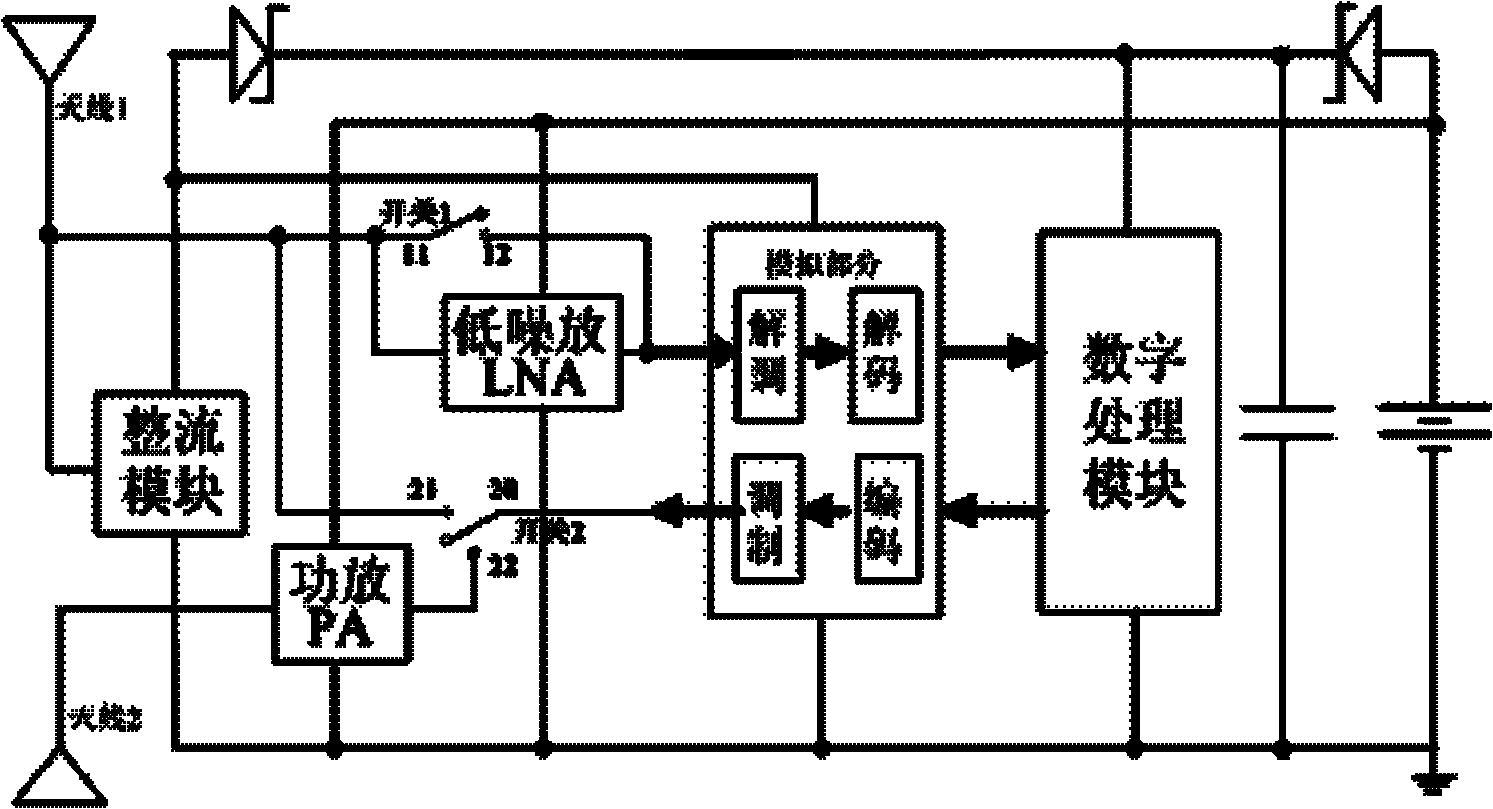Semi-active label
A semi-active, labeling technology, applied to record carriers, instruments, computer parts, etc. used in machines, it can solve the problems of large volume of active labels, loss of function of labels, limited battery life, etc., and achieve a simple and clear circuit structure. The effect of increased life and simple structure
- Summary
- Abstract
- Description
- Claims
- Application Information
AI Technical Summary
Problems solved by technology
Method used
Image
Examples
Embodiment Construction
[0021] The semi-active tag structure of the present invention adopts the method that the analog part of the tag is powered by the rectifier module, and the digital processing module is powered by the battery. The module supplies power, and the digital processing module only enters the working state when the reader reads the tag, that is, the tag receives the relevant command sent by the reader, and it is in a sleep mode with little power consumption most of the time. This power supply method can save battery power to the greatest extent, greatly increasing the working life of the tag in the active state, and the ideal state can reach about 10 years.
[0022] According to the relationship between the battery voltage value and the voltage value rectified by the rectifier module, the semi-active tag structure of the present invention works in two states, as follows figure 1 The structure diagram of the semi-active tag with figure 2 The structure diagram of the switch built by t...
PUM
 Login to View More
Login to View More Abstract
Description
Claims
Application Information
 Login to View More
Login to View More - Generate Ideas
- Intellectual Property
- Life Sciences
- Materials
- Tech Scout
- Unparalleled Data Quality
- Higher Quality Content
- 60% Fewer Hallucinations
Browse by: Latest US Patents, China's latest patents, Technical Efficacy Thesaurus, Application Domain, Technology Topic, Popular Technical Reports.
© 2025 PatSnap. All rights reserved.Legal|Privacy policy|Modern Slavery Act Transparency Statement|Sitemap|About US| Contact US: help@patsnap.com



